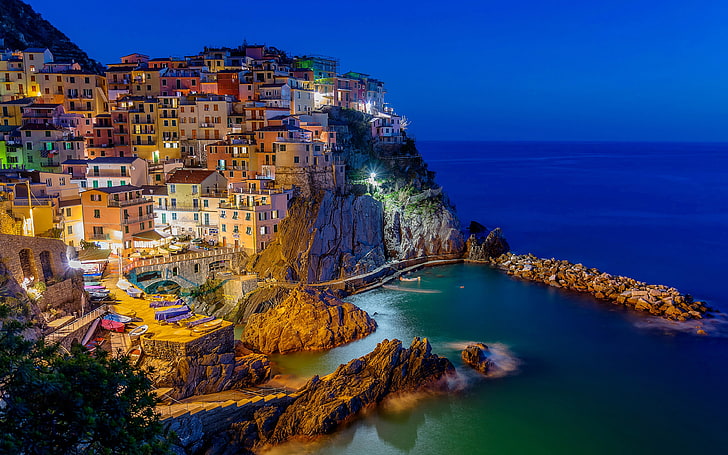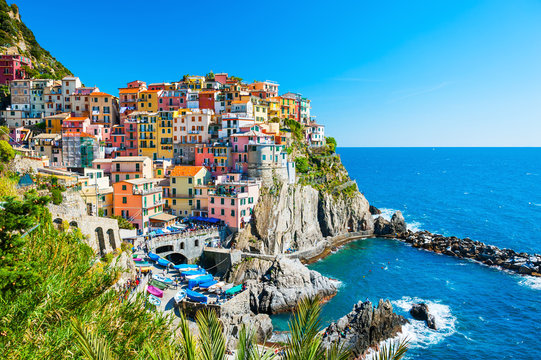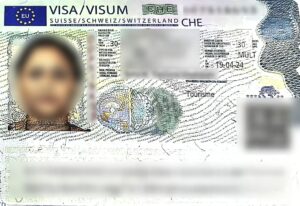Country Details
Italy
Italy: A Journey Through History, Culture, and Natural Beauty
Italy is one of the world’s most popular tourist destinations, attracting millions of visitors each year. Known for its rich history, stunning landscapes, and exquisite cuisine, Italy offers an unforgettable travel experience.
Italy’s cuisine is another major attraction. Visitors can indulge in authentic pizza in Naples, fresh pasta in Bologna, and fine wines in regions like Chianti and Piedmont.

Why choose us?
Top Locations
Italy is a dream destination for travelers, offering a perfect blend of history, art, cuisine, and breathtaking landscapes. From ancient ruins to picturesque coastlines, the country has something for everyone.

- Rome
- Venice
- Florence
- Milan
- Cinque Terre
Italy Visa Information
Visa Type: Sticker
Length of Stay: 180 days
Validity: 10 Years
Entry: Multiple
General Information
Do Indians need a visa for Italy?
Yes, Indian citizens need a visa to visit Italy. They can apply for a Schengen Visa-Type C, which allows short stays for tourism, business, family visits, or other approved activities for up to 90 days within a 180-day period.
What will the Schengen visa look like?
Here is a sample of the Schengen visa:

What is the 90/180-day Schengen rule?
The 90/180 rule is a key guideline for travellers with a Schengen visa, determining how long you can stay within the Schengen Area. It states that you can remain in the Schengen Zone for up to 90 days within any 180-day period. These 90 days can be used consecutively or spread across multiple trips, but your total stay cannot exceed 90 days within any rolling 180-day timeframe.
How can I obtain a multi-entry Italy visa?
To obtain a multiple-entry Italy Schengen visa, especially under the new regulations favourable to Indians, follow these steps:
Build a travel history: Obtain and properly use two Schengen visas within the last three years.
Apply for multiple-entry: Once you’ve met the travel history requirement, apply for a multiple-entry visa. This visa may initially be valid for up to two years. Proper use of this visa can lead to eligibility for a five-year multiple-entry visa.
Check passport validity: Ensure your passport is valid to cover the entire duration of the multiple-entry visa you are applying for.
Provide justifications: Your application should clearly outline the need for multiple entries, such as frequent business travel, family visits, or other ongoing travel needs.
Utilise the cascade regime: Under the EU’s “cascade” regime, Indian nationals can progress from a two-year visa to a five-year visa, gaining travel privileges similar to those of visa-free nationals if all conditions are met.
Understand EU regulations: The Visa Code Regulation (EC) No 810/2009 governs Schengen visas. The new “cascade” system facilitates easier access to long-term visas for Indian nationals with an established travel record.
Eligibility & Requirements
To apply for an Italy visa, Indian citizens need to submit the following documents:
Visa application form: Complete and error-free Italy visa application form.
Passport photo: You must have one passport photo of yourself that meets the Italy visa photo requirements.
Valid passport: Submit your passport valid for at least three months beyond your planned departure from the Schengen Area. The passport must have been issued within the last ten years and contain at least two blank pages.
Return flight ticket: Present a confirmed return or onward flight ticket that proves your intent to leave Italy before your visa expires.
Proof of accommodation: This can be a hotel reservation, rental agreement, or a letter of invitation from a host in Italy.
Cover letter: Write a cover letter explaining the purpose of your trip, your planned itinerary, and your intention to return to India after your visit.
Schengen travel insurance: Obtain travel insurance with a minimum coverage of €30,000, valid for the entire duration of your stay in the Schengen Area.
Proof of financial means: The government needs proof of your capability to fund your stay, such as the bank account statements for the last three months and ITR acknowledgement for the last two years. The bank statements should be signed and stamped by your bank.
Proof of current social and professional status: This can be an employment contract, leave approval letter from the employer or certificate of employment. To prove social ties, you can submit any other document demonstrating your personal links to the country of residence (e.g., a copy of the marriage certificate or family record book).
Yes, travel insurance is mandatory when applying for an Italian tourist visa. Additionally, the travel insurance must meet the following criteria:
The minimum coverage shall be €30,000.00.
The insurance shall be valid throughout the territory of the Schengen States.
It should cover the entire period of the person’s intended stay or transit in the Schengen Area.
The travel insurance should cover any expenses that might arise in connection with repatriation for medical reasons, urgent medical attention, emergency hospital treatment, or death during the stay(s) on the territory of the Member States.
For an Italian tourist visa, you must demonstrate that you have sufficient funds to cover your stay in the Schengen Area. Based on the Italian subsistence table, here are the minimum funds you require for an Italian visa:
For stays of 1 to 5 days: A fixed amount of €269.60 is required, which is reduced to €212.81 if you travel with others.
For stays of 6 to 10 days: You need a daily amount of €44.93 or €26.33 per person if travelling with others.
For stays of 11 to 20 days: You need a fixed amount of €51.64 plus a daily amount of €36.67. If travelling with others, the fixed amount is reduced to €25.82 and the daily amount to €22.21 per person.
For stays longer than 20 days: You require a fixed amount of €206.58 and a daily amount of €27.89. If travelling with others, this is reduced to a fixed amount of €118.79 and a daily amount of €17.04 per person.
To show that you have enough funds, you can submit the following:
Bank statements: Provide signed and stamped bank statements from the last 3 months. You can request these from your bank in person or, if available, via online banking for stamped digital copies. Ensure the statements clearly reflect your financial stability and ability to cover your travel expenses.
Investments and mutual funds: If you have mutual funds, fixed deposits, or other investments, submit official statements from your financial institution. These documents should detail the current value of your assets and be signed and stamped by the issuing institution.
To demonstrate that you can financially support yourself during your stay in Italy, you will need to provide the following financial documents:
Bank statements: Submit original bank statements from the past three months. These statements should show regular income, such as salary credits, and maintain a healthy balance.
Income tax returns (ITR): To prove your financial stability, provide copies of your ITR filings for the past two years.
Salary slips: If you are employed, include your salary slips from the past three to six months.
Proof of investments: You can also submit documents that show other assets, such as fixed deposits, mutual funds, or property, as additional financial proof.
Your passport must be valid for at least three months after your planned departure from the Schengen Area. So, if your passport is close to expiring, it’s recommended that you renew it before applying for an Italian visa.
Yes, you can apply for a Schengen visa even if your accommodation isn’t fully confirmed at the time of application. However, you must provide proof that you have made temporary arrangements. These arrangements can include hotel reservations or an invitation letter from friends or family with whom you plan to stay. These documents show that you have taken steps to secure a place to stay during your visit, which is crucial for the visa application process.
When applying for an Italian visa, you must demonstrate strong ties to your home country to convince the consular officer that you will return to India after your trip. Here are the documents you can provide:
Employment proof: If you’re employed, provide a letter from your employer confirming your job position, salary, and approved leave. Mention that your job will be waiting for you upon your return.
Owning property: Submit documents proving ownership of property or real estate in India, such as a house or land. This indicates a significant investment in your home country.
Family connections: Provide details about your family situation, such as marriage certificates or birth certificates of dependent children, to demonstrate your responsibilities in India.
Educational commitments: If you are a student, include a letter from your educational institution confirming your enrollment and the date you are expected to return to continue your studies.
Non-employed travellers: Travellers who cannot use business or employment documents can show proof of current activities in local organisations, volunteer work, or involvement in religious or cultural activities.
Retired travellers: Retired individuals can submit pension or retirement benefits. Additionally, utility bills and property ownership can be used to provide ties to India.
When minors apply for an Italian visa, they must provide additional documentation to support their application, including:
Consent letter: A letter of consent from the non-travelling parent(s) or legal guardian must be certified by a public notary.
Passport copies: Copies of the passport, PAN card, or driving license of both parents or legal guardians.
Travel authorisation: If the minor is travelling without both parents, a court order or written parental authorisation is required.
Proof of guardianship: If the minor is travelling with a third party, you must provide documentation proving the relationship and including permission from the parents or guardians.
Yes, you can apply for a Schengen visa from a country other than India if you are legally residing in that country. You must provide proof of your legal residency, such as a residence permit or visa, along with your application.
Your passport-sized photo must meet specific Schengen visa requirements, including:
Size: 35 mm x 45 mm (width x height).
Head size: The head should occupy 70-80% of the photo, approximately 32-36 mm from chin to crown.
Colour: The photo must be in colour with a plain white or light grey background.
Face position: Your face should be centred, and look at the camera with a neutral expression.
Eyes: Eyes should be open and clearly visible, with no reflections or obstructions.
Glasses: If you wear glasses, ensure there is no glare or reflection on the lenses and your eyes are fully visible. Avoid wearing tinted glasses.
Headwear: Headwear is not allowed unless it is for religious reasons. In such cases, the entire face must be visible from the chin to the forehead, with the edges of the face clearly shown.
If your passport has only one empty page left, it might be sufficient for a visa to be issued. However, remember that immigration authorities at your destination may require additional blank pages for entry and exit stamps.
Recommendation: If you have limited blank pages remaining, it’s advisable to renew your passport. The Indian passport renewal through the ‘Tatkal’ (express) service typically takes about 3 days.
If you are retired, you can enhance your chances of obtaining an Italian visa by demonstrating financial stability and a clear purpose for your visit. Here’s what you should do:
Pension statements: Provide pension statements from the past three to six months as evidence of a consistent income stream.
Bank statements: Submit statements showing a healthy balance and regular pension credits.
Proof of savings or investments: Include documents that reflect your financial stability, such as fixed deposits, mutual funds, or property ownership.
Retirement proof: Provide a copy of your retirement certificate or a letter from your former employer confirming your retirement status.
Sponsorship letter: If a family member sponsors your trip, include a sponsorship letter and proof of their financial capacity to support your stay.
Travel itinerary and accommodation: Clearly outline your travel plans and accommodation arrangements in Italy.
You can demonstrate the purpose of your trip by providing the following documents:
Tourism: Hotel reservations, a detailed travel itinerary, and return flight tickets.
Business: An invitation letter from a company or business partner in the Schengen Area and details of meetings or conferences you plan to attend.
Family visit: Invitation letter from your host in the Schengen country, along with their proof of residence and documentation showing your relationship.
An invitation letter is a document provided by someone you plan to visit in the Schengen Area. It confirms that they invite you and will accommodate you during your stay. If you’re staying in a hotel, you don’t need an invitation letter. Instead, you should provide your hotel reservations as proof of accommodation.
Application Process
To obtain an Italian visa from India, here are the steps you must follow:
Gather required documents: Before starting your application, gather all the documents and ensure they provide the required information.
Complete the visa application form: Visit the official website to complete the Italy visa application form online. Once completed, download, print, and sign to submit during your appointment.
Schedule a visa appointment: To book an appointment, visit the official website of the visa application centre in your jurisdiction.
Attend the Italy visa appointment: Arrive at the visa application centre on the scheduled date and time. Submit your application form, along with the required documents and applicable fees. You might also be required to provide biometric data, including fingerprints.
Pay the visa fee: Pay the Italian visa fee at the designated payment counter.
Collect your visa: Once your visa application is approved, collect your passport with the issued visa from the designated collection point.
No, an interview is not required when applying for an Italy Schengen visa.
However, in special circumstances, such as when there are discrepancies in your application or if the visa officer deems it necessary for further assessment, an interview may be requested. This is generally to clarify details or gather more information to ensure the integrity and accuracy of your application.
To increase the likelihood of your Italian visa application being approved, make sure to steer clear of these common mistakes:
Incomplete documents: Having documents with missing or false information can cause visa rejection. Always double-check that all required documents are accurate, complete, and meet the specified requirements.
Insufficient financial proof: It is vital to have sufficient funds for your trip to Schengen. Make sure you clearly demonstrate that you have enough funds to cover your stay in Italy.
Unrealistic or inconsistent itinerary: Since the Schengen area consists of 29 countries, you must clearly indicate your travel plans, including your place of stay, booked flights, and planned activities in each country.
Lack of travel insurance: Secure comprehensive travel insurance that meets the mandatory coverage requirements.
Unclear purpose of visit: Be clear and precise about the purpose of your visit, your itinerary, and your reasons for visiting. The purpose of the visit can be mentioned in various documents, such as an invitation letter or travel itinerary.
Previous visa violations: A history of overstaying or violating visa terms in previous Schengen visits can negatively impact your application. Be sure to explain why your visa was violated and, if possible, indicate that it was unavoidable.
Entry & Exit Regulations
If you lose your passport with an Italian visa while travelling, you should immediately report the loss to the local police and obtain a police report. After that, you must visit the nearest Indian embassy or consulate to apply for an emergency passport. Also, contact the Italian consulate to inform them of the loss and inquire about the possibility of reissuing the visa.
Yes, you can bring your pet to Italy with a Schengen visa. Italy is known as one of the most dog-friendly countries in the Schengen Area, making it the ideal destination for travelling with your pet. However, there are specific requirements you must meet:
Microchip: Your pet must be microchipped with an ISO 11784/11785 compliant 15-digit pet microchip.
Rabies vaccination: Your pet must be vaccinated against rabies, which must be administered at least 21 days before travel.
EU pet passport: Your pet must have an EU pet passport if you travel from an EU country. If you travel from outside the EU, a third-country official veterinary certificate is required.
Tapeworm treatment: Dogs must be treated for tapeworm 24-120 hours before entering Italy.
If your Italian visa is approved but your travel dates change, you can still use the visa as long as the new travel dates fall within the visa’s validity period. However, if your new travel dates fall outside the visa’s validity, you must apply for a new visa.
No, you are not legally allowed to work remotely or engage in any form of employment while on a Schengen tourist visa. This visa is meant strictly for tourism, leisure, or short-term visits, not for work.
Consequences: If caught working remotely, you could face penalties, deportation, and even future visa bans.
Visa Extension & Overstays
Yes, you can apply for a Schengen visa even if you overstayed a previous one. However, you must be prepared to explain the circumstances of the overstay and provide evidence that it was unintentional or unavoidable. A clear and honest explanation, supported by relevant documents (such as medical records if the overstay was due to health reasons), can help reduce the negative impact of a previous overstay on your new application.
If you need to extend your stay in Italy for medical reasons, you can apply for a visa extension at the local immigration office. To do so, you will need to provide the following documents:
Medical certificate: Obtain a certificate from an Italian medical professional explaining the medical necessity for your extended stay.
Proof of insurance: Provide evidence that your travel insurance covers the additional period of your stay.
Financial proof: Show you sufficient funds to support yourself during the extended stay.
Refunds, Rejections & Reapplications
If your visa gets rejected, you can address the situation in a few different ways depending on the rejection reasons:
Reapply for your visa: After your visa is rejected, you can submit a new application once you have addressed the reasons for the rejection. When doing so, ensure all your documents are complete and accurate before reapplying. If your visa was rejected due to minor issues, such as missing or incomplete documents, you have a high chance of getting it approved once you reapply.
Appeal the rejection: Alternatively, you can appeal the decision within 60 days of the rejection. To do this, gather any missing documents or additional information and write a compelling appeal letter explaining why your visa should be approved.
